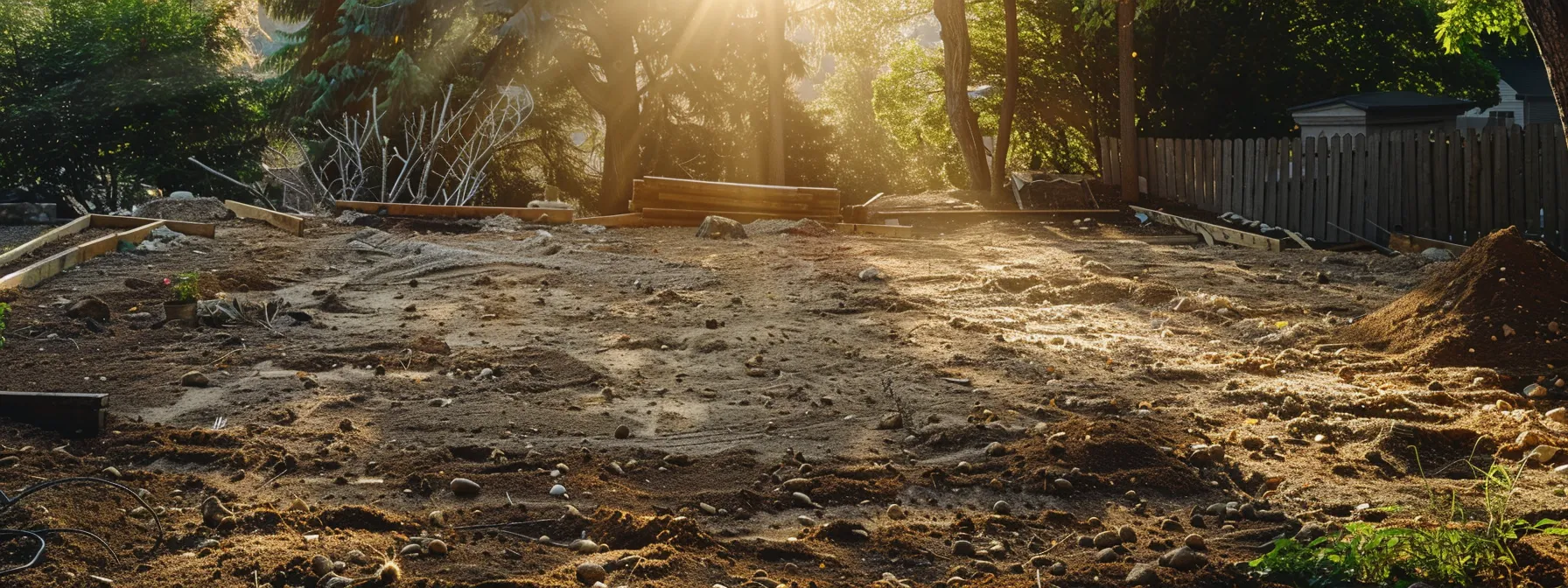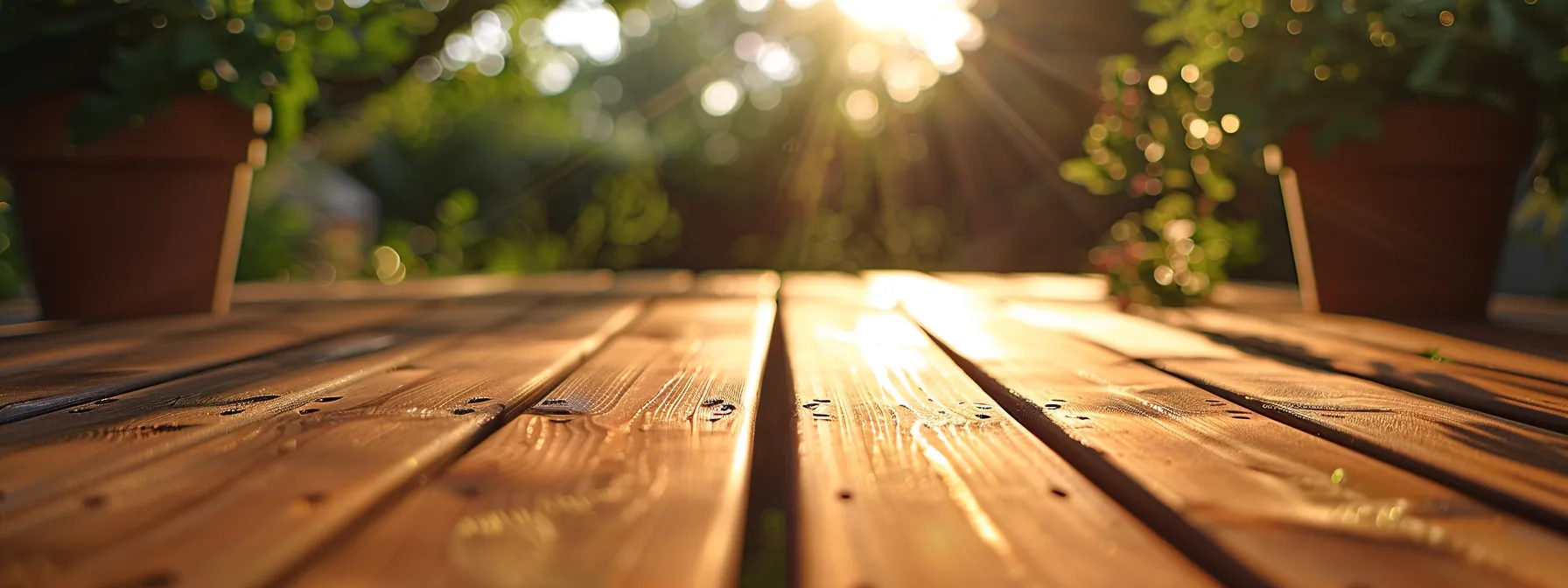Your Ultimate Deck: Deck Building Tips for 2025
Are you dreaming of the perfect outdoor space for your Sussex County, Delaware home? ProCoast Decking, your trusted deck builder near you, is here to help. In this guide, we’ll share essential deck building tips for 2025, covering everything from design choices to sustainable materials like composite decking. As a Dura-Decking Certified Contractor, we’ll show you how to create a safe, durable, and eco-friendly deck that enhances your coastal living experience. Learn about permit requirements, foundation preparation, and maintenance strategies to ensure your new deck stands the test of time.
Key Takeaways
- Proper planning and material selection are crucial for creating durable, attractive decks in coastal areas
- Obtaining necessary permits and following building codes ensures compliance and safety in deck construction
- Sustainable materials and native plants enhance eco-friendliness and support local ecosystems in deck design
- Regular maintenance, including cleaning, sealing, and inspections, is essential for preserving deck longevity and safety
- Secure railings and adequate lighting are important safety features that also add value to outdoor spaces
Choose the Right Deck Design for Your Outdoor Space

Selecting the right deck design is crucial for creating an inviting outdoor space. Homeowners should assess their outdoor area and lifestyle needs to determine the ideal deck layout. Choosing materials that withstand coastal climate conditions while complementing the home’s style is essential. For expert guidance on deck building, Contact Us ProCoast Coastal Home Services or visit Our Google Page for more information about our decks-porches services.
Assess Your Outdoor Space and Lifestyle Needs
Homeowners should evaluate their outdoor space carefully, considering factors such as available area, terrain, and existing structures. This assessment helps determine the ideal deck size, shape, and location, ensuring the new addition complements the home’s architecture and enhances overall property value. A well-planned deck can serve as an extension of living space, seamlessly connecting indoor and outdoor areas.
Lifestyle needs play a crucial role in deck design decisions. Families who enjoy outdoor entertaining may prioritize a spacious deck with ample seating and dining areas, while those seeking a quiet retreat might opt for a more intimate porch or patio setup. Budget considerations are essential, as deck materials and designs vary in cost. Homeowners should also factor in long-term maintenance requirements and potential warranty options when selecting materials for their home improvement project.
Select Materials That Suit Your Climate and Style
Selecting the right materials for deck construction is crucial in coastal areas like Sussex County. Wood remains a popular choice for its natural beauty, but composite materials offer superior durability and low maintenance in humid climates. A general contractor can guide homeowners through material options, considering factors such as weather resistance, longevity, and aesthetic appeal.
The style of the deck should complement the home’s architecture and the surrounding landscape. Proper lighting enhances safety and ambiance, extending the usability of the outdoor space into the evening hours. When planning a deck renovation, homeowners should consider:
- Climate-resistant materials
- Color and texture options
- Built-in features like seating or planters
- Railing designs
- Lighting solutions for safety and aesthetics
With the perfect deck design chosen, the real work begins. Now, it’s time to navigate the paperwork and regulations that stand between you and your dream outdoor space.
Plan Ahead for Deck Building Permits and Regulations

Navigating deck building permits and regulations is crucial for a successful project in 2025. Homeowners must research local building codes and prepare necessary documentation before starting construction. This process ensures compliance with safety standards and avoids potential legal issues. Understanding permit requirements is essential for any deck project, whether it’s a small porch or a large outdoor living space.
Research Local Building Codes and Permit Requirements
Homeowners embarking on deck construction projects must thoroughly research local building codes and permit requirements. This process involves reviewing zoning regulations, setback requirements, and structural specifications that may impact the deck’s design and placement. Experienced contractors with a background in carpentry and landscape design can provide valuable insights into navigating these regulations effectively.
Obtaining the necessary permits is crucial for ensuring compliance and avoiding potential legal issues. Homeowners should consult with local authorities to understand the specific documentation needed, which may include detailed plans, material specifications, and site surveys. This proactive approach aligns with best practices in interior design and construction, ensuring a seamless integration of the new deck with the existing home and landscape.
Prepare Necessary Documentation for Application
Preparing necessary documentation for deck building applications requires careful attention to detail. Homeowners should compile comprehensive plans that include measurements, materials, and structural details for their proposed deck, including any concrete foundation or pergola features. These plans serve as a crucial investment in the project’s success, ensuring clear communication with building officials and contractors.
The application process typically requires additional supporting documents. Homeowners should gather property surveys, proof of ownership, and any relevant historical or environmental assessments. For decks with unique features like custom flooring or integrated outdoor kitchens, detailed specifications may be necessary. Providing thorough documentation demonstrates a commitment to quality and compliance, ultimately benefiting the customer and expediting the approval process.
- Compile detailed deck plans and measurements
- Include material specifications and structural details
- Gather property surveys and proof of ownership
- Provide additional documentation for unique features
- Ensure all paperwork is complete and accurate
Plans secured, permits in hand. Now, the earth awaits your shovel.
Prepare the Ground for a Solid Deck Foundation

Preparing the ground for a solid deck foundation is crucial for long-lasting outdoor spaces. This process involves clearing and leveling the building area, as well as installing footings and support posts correctly. A well-prepared foundation ensures stability and durability, whether the deck will support a hot tub or serve as a platform for outdoor furniture and brand-new paint finishes.
Clear and Level the Building Area
Clearing and leveling the building area is a crucial first step in deck construction. Homeowners should remove vegetation, debris, and any obstacles that could impede the building process. This preparation ensures a stable foundation for the deck, similar to the importance of a solid base in home construction projects.
Once cleared, the area must be leveled to provide an even surface for the deck structure. This process may involve grading the soil and using specialized equipment to achieve the desired elevation. Proper leveling is essential for ensuring the deck’s stability and longevity, much like the precision required in cabinetry installation.
Install Footings and Support Posts Correctly
Installing footings and support posts correctly is crucial for a stable deck foundation. Homeowners should consult local building codes to determine the required depth and spacing of footings, which may vary based on soil conditions and deck design. Professional contractors use specialized equipment to dig holes and set concrete footings, ensuring they can support the deck’s weight and withstand environmental factors.
Proper installation of support posts involves securing them to the footings and ensuring they are plumb and level. This process requires precision and expertise, similar to construction practices in cities like Dallas or Houston. Contractors use techniques such as cross-bracing to enhance stability, particularly for elevated decks or those in areas prone to high winds. Correct installation of these structural elements creates a solid foundation for the deck space, regardless of whether it’s in a coastal area like San Diego or inland.
The foundation set, attention turns to materials. Sustainable options await, promising an eco-friendly deck that lasts.
Use Sustainable Materials for Eco-Friendly Decking

Sustainable materials are essential for eco-friendly decking in 2025. Homeowners can opt for recycled or composite decking options, which offer durability and low maintenance while reducing environmental impact. Incorporating native plants around the deck enhances its natural appeal and supports local ecosystems. These choices align with the growing demand for sustainable outdoor living spaces across the United States.
Opt for Recycled or Composite Decking Options
Homeowners seeking eco-friendly decking solutions can opt for recycled or composite materials, which offer durability and sustainability. These options, popular in coastal areas and cities like San Antonio, combine recycled plastic and wood fibers to create long-lasting deck boards that resist fading, staining, and mold growth.
Composite decking materials require minimal maintenance compared to traditional wood, reducing the need for staining, sealing, or painting. This low-maintenance feature appeals to busy homeowners in San Antonio and other regions, providing a cost-effective and environmentally responsible choice for outdoor living spaces.
Incorporate Native Plants Around Your Deck
Incorporating native plants around a deck enhances its eco-friendly appeal while supporting local ecosystems. Homeowners in Sussex County can select plants adapted to coastal conditions, which require less water and maintenance than non-native species. These plants provide natural beauty and create a seamless transition between the deck and surrounding landscape.
Native plants offer additional benefits such as attracting local wildlife and reducing the need for chemical fertilizers. When planning landscaping around a deck, homeowners should consider factors like plant height, spread, and seasonal changes to ensure a harmonious outdoor living space. Consulting with local nurseries or landscaping professionals can help in selecting the most suitable native plants for the specific microclimate around the deck.
The sun set on the eco-friendly deck. As darkness fell, safety became paramount.
Enhance Deck Safety With Railings and Lighting

Enhancing deck safety is crucial for homeowners in 2025. Secure railings prevent accidents, while proper lighting ensures safety and creates ambiance. These features not only protect users but also add value to outdoor living spaces. Homeowners should consider both functional and aesthetic aspects when implementing these safety measures.
Install Secure Railings to Prevent Accidents
Installing secure railings is essential for preventing accidents on decks, especially in coastal areas where weather conditions can affect safety. Homeowners should choose railings that meet local building codes and can withstand the corrosive effects of salt air. Proper installation ensures the railing system can support the required weight and resist lateral forces.
Railing materials such as stainless steel, aluminum, or composite offer durability and low maintenance in coastal environments. The height and spacing of balusters should comply with safety standards to prevent falls, particularly for children and pets. Professional installation guarantees proper anchoring and structural integrity, enhancing overall deck safety.
Add Lighting Features for Safety and Ambiance
Adding lighting features to a deck enhances both safety and ambiance. Homeowners should install adequate lighting along stairs, pathways, and seating areas to prevent trips and falls during evening hours. LED fixtures offer energy-efficient illumination and can withstand coastal weather conditions, making them ideal for outdoor use.
Strategically placed lighting can create a warm and inviting atmosphere for outdoor entertaining. Options such as recessed deck lights, post cap lights, and string lights provide versatility in design. When planning deck lighting, homeowners should consider:
- Task lighting for cooking and dining areas
- Accent lighting to highlight landscaping features
- Motion-sensor lights for added security
- Dimmable options for adjustable ambiance
- Solar-powered lights for eco-friendly illumination
Safety secured, the deck stands strong. Now, let’s turn to keeping it that way for years to come.
Maintain Your Deck for Longevity and Durability

Regular maintenance is crucial for preserving a deck’s longevity and durability. Homeowners should clean and seal their decks regularly to protect against moisture and UV damage. Additionally, conducting routine inspections and promptly addressing any issues can prevent minor problems from escalating into costly repairs. These practices ensure the deck remains safe and attractive for years to come.
Clean and Seal Your Deck Regularly
Regular cleaning and sealing are essential for maintaining a deck’s appearance and structural integrity. Homeowners should clean their decks thoroughly at least once a year, removing dirt, debris, and mildew. This process involves using a suitable deck cleaner and a stiff brush or pressure washer, depending on the decking material.
After cleaning, applying a high-quality sealant protects the deck from moisture, UV rays, and general wear. The frequency of sealing depends on the deck’s exposure to elements and usage, but typically ranges from every 1-3 years. Proper sealing not only enhances the deck’s longevity but also preserves its color and prevents wood rot. Homeowners should follow these steps for effective deck maintenance:
- Inspect the deck for damage or loose boards
- Clean the surface thoroughly
- Allow the deck to dry completely
- Apply sealant according to manufacturer’s instructions
- Allow adequate drying time before use
Inspect for Damage and Make Necessary Repairs
Regular inspections are crucial for maintaining a deck’s longevity and safety. Homeowners should examine their decks thoroughly at least twice a year, focusing on key areas such as support posts, joists, and deck boards. This proactive approach allows for early detection of issues like loose fasteners, wood rot, or structural damage.
When damage is identified, prompt repairs are essential to prevent further deterioration. Common repairs include replacing worn deck boards, tightening loose railings, and addressing foundation issues. Homeowners should consider the following maintenance checklist:
- Check for loose or corroded fasteners
- Inspect wood for signs of rot or insect damage
- Evaluate the stability of railings and stairs
- Assess the condition of support posts and beams
- Look for signs of water damage or mold growth
Frequently Asked Questions
How do I choose the best deck design for my outdoor space?
To choose the best deck design for your outdoor space, consider your home’s architecture, available area, intended use, and budget. Evaluate materials like wood or composite, and think about features such as built-in seating or multi-level designs that complement your coastal lifestyle and enhance your home’s value.
What permits and regulations do I need for building a deck?
In Sussex County, Delaware, building a deck typically requires a building permit from the county’s Building Code Department. You’ll need to submit detailed plans, including dimensions, materials, and structural details. Zoning regulations may also apply, especially for coastal properties. Always check with local authorities for specific requirements.
How can I enhance deck safety with proper railings and lighting?
Enhance deck safety by installing sturdy railings that meet local building codes and provide adequate support. Add proper lighting, such as LED deck lights or post cap lights, to improve visibility during nighttime use. These measures help prevent accidents and create a safer outdoor living space.